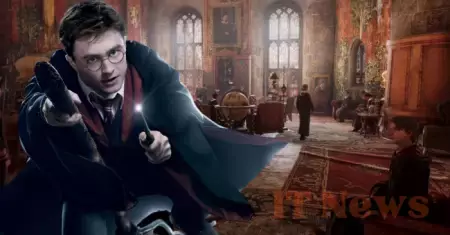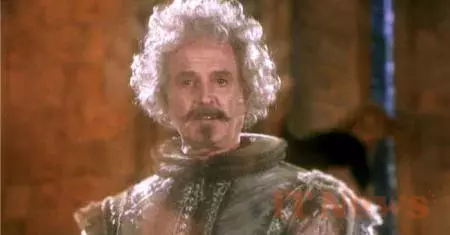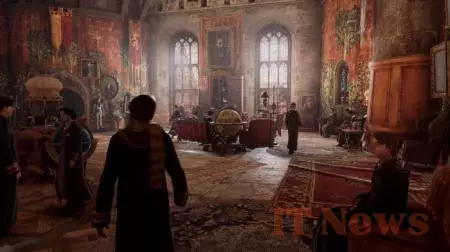The most famous house in the Harry Potter universe is the last on our list to reveal its little secrets. While the films focus on Gryffindor, its values, its Fat Lady, its superb common room, or its magic sword, J.K. Rowling's novels give us a few additional anecdotes about Harry, Hermione, and Ron's house.
#4 The Sword of Gryffindor, the House's Magical Relic
Rowena Ravenclaw's Diadem is to Ravenclaw what the Sword of Gryffindor is to the lion-emblazoned house. It is an integral part of the books and films, as it is linked to the fate of Harry and the Deathly Hallows. He uses it in his second year to defeat the Basilisk, and then Ron and Neville Longbottom use it to destroy two Horcruxes, Salazar Slytherin's Locket and Nagini, respectively.
But not all fans know the full story of the magic sword. Created by the goblin Ragnuk the First, it belongs to the founder Godric Gryffindor, despite disagreement with the goblins, who believe it was stolen from them. Magical, it only absorbs what makes it stronger, and cannot be corrupted. Furthermore, it only reveals itself to Gryffindors who prove themselves worthy of wearing it, that is, those who possess the greatest qualities of the house, namely bravery, determination, or audacity.
#3 The Tragic Story of Nearly Headless Nick
Sir Nicholas, or more commonly known by the students as Nearly Headless Nick, has, like all the ghosts of the four houses, a tragic story (we'll let you reread the one about Helena Ravenclaw and the Bloody Baron). In Chapter 8 of the second book in the Harry Potter adventures - Chamber of Secrets - Harry, Ron, and Hermione are invited to the anniversary of the death of this ancient noble wizard, killed 500 years earlier.
Sir Nicholas then tells the trio the circumstances of his beheading. While trying to help a noblewoman by giving her a more beautiful smile, he messed up his spell, instead creating elephant tusks. Accused of dark magic, he was sentenced to death. But legend has it that the executioner needed forty-five blows of the axe to separate Sir Nicholas's head from his body. He has since borne this grim nickname, which prevented him from being accepted into the Headless Hunters Club.
#2 Godric Gryffindor was Muggle-friendly
Godric Gryffindor and Salazar Slytherin regularly clashed. But one of the main points of contention concerned pure-blood wizards (very dear to the founder of Slytherin). According to him, they represent the elite of the wizarding world and should be the only ones allowed into Hogwarts. This is something Godric Gryffindor opposed. According to him, the value of a wizard is not linked to his lineage and blood, but to his values. He firmly defended the idea that Muggle-borns have the right to study at the School of Magic. This is mainly why there are many of them in the Gold and Scarlet House. This quarrel between the two founders will be the last straw. It will lead Salazar to isolate himself from the other figures at Hogwarts and to create the Chamber of Secrets, designed to eliminate Muggle-borns. Slytherin's is located under the school near the dungeons, Hufflepuff's is hidden behind a huge barrel near the kitchens, and Ravenclaw's living quarters, perched in the West Tower, require you to answer a very tricky riddle to enter.
The Gryffindor common room is located in the tower of the same name, which overlooks the school. Access is via a spiral staircase from the seventh floor, protected by the portrait of the Fat Lady, awaiting a password known only to the students of the house. Its architectural style is strongly reminiscent of the Middle Ages, its castles, its legends, and the Arthurian myth (notably through its values and the magic sword, symbol of the house). According to fans, the fact that the tower is so tall and overlooks the castle grounds symbolizes the vigilance of the Gryffindors, the elevation of the soul, or even the nobility of the spirit, which watches over the school like a knight protects his castle. An anecdote that can be found on the fansites dedicated to the lore of Harry Potter.







0 Comments